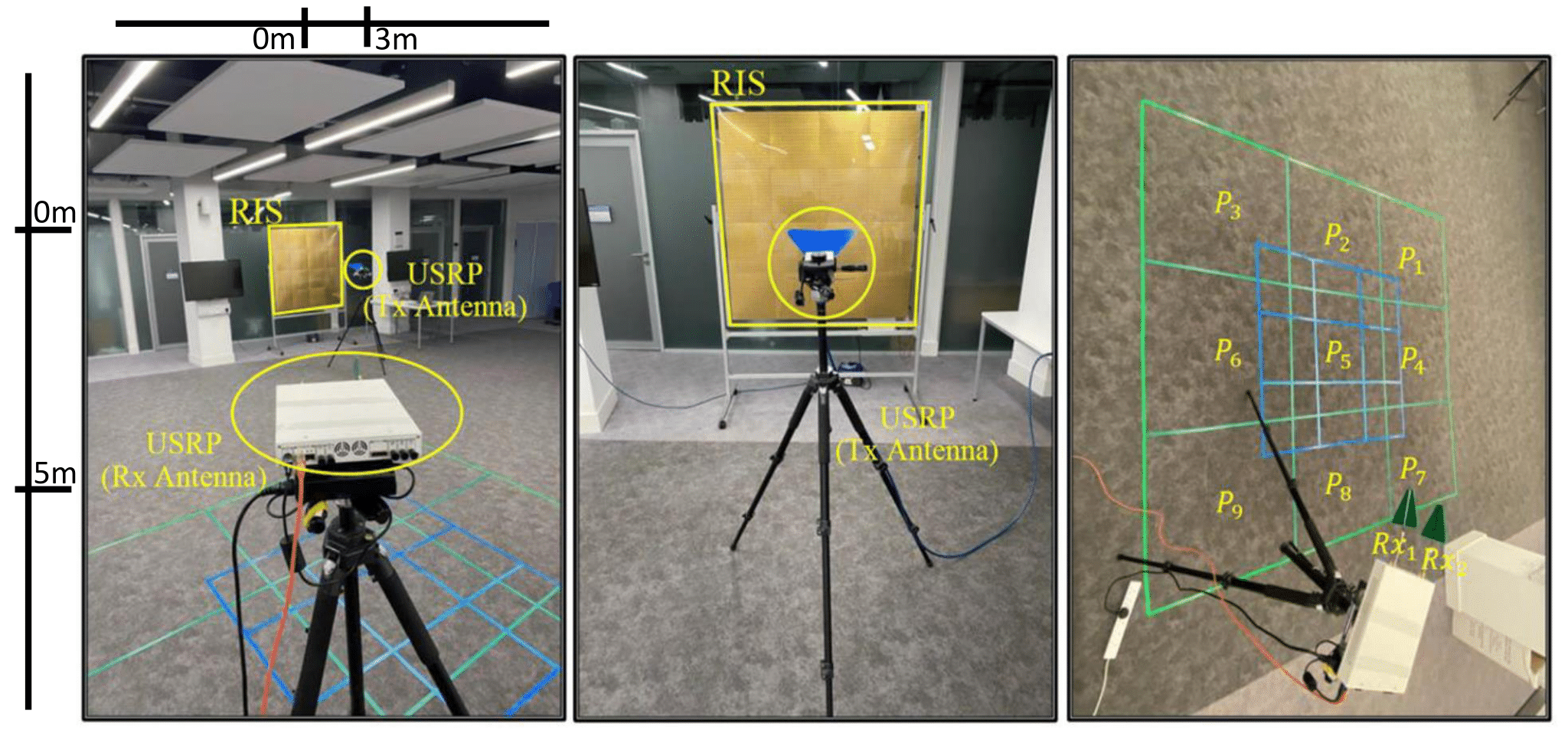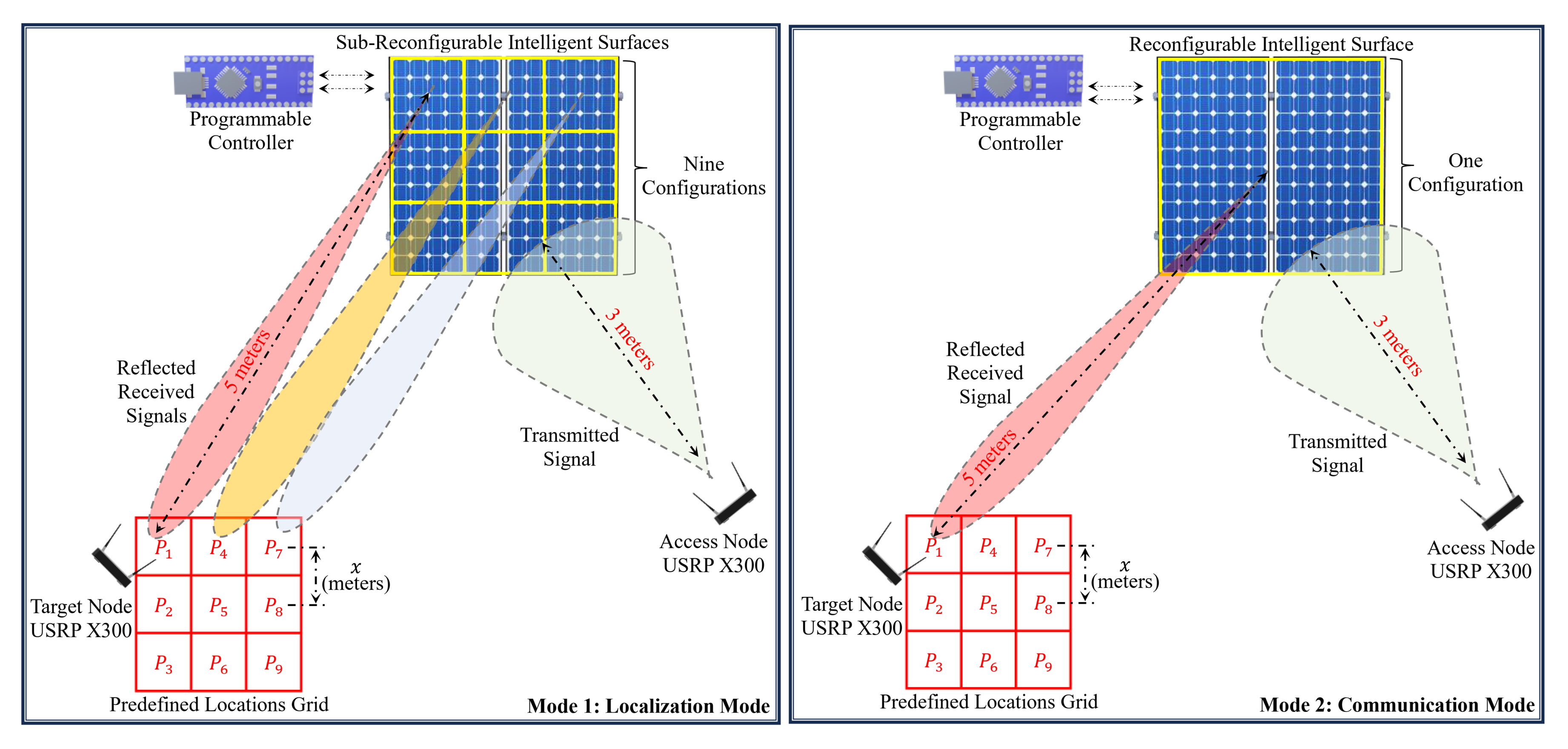Coded Environments: Data-Driven Indoor Localisation with Reconfigurable Intelligent Surfaces
Indoor localisation is crucial in wireless communication for tracking and navigation applications. Reconfigurable Intelligent Surfaces (RIS) offer a promising solution, enhancing accuracy and reliability. Our study explores integrating RIS with machine learning to revolutionise indoor localisation.
Published in Electrical & Electronic Engineering
Indoor localisation in wireless networks poses a unique set of challenges, where traditional approaches often fall short in providing the desired precision and scalability. Our research addresses this challenge by leveraging the capabilities of Reconfigurable Intelligent Surfaces (RIS) in conjunction with machine learning algorithms, specifically gradient-boosted trees (GBT), to achieve remarkable accuracy in indoor localisation tasks.
The experimentation involved deploying directive antennas at a fixed interspacing distance of 1 and 0.5 meters between 9 different positions, with the RIS both activated and deactivated, see Fig.1 and Fig.2. Notably, our results illustrate a substantial enhancement in signal-to-noise ratio (SNR) with the RIS activated, leading to a marked improvement in classification accuracy. For instance, with the RIS activated and an interspacing distance of 1 meter, the average SNR across all positions increased compared to the RIS-deactivated scenario. This increase in SNR directly contributed to an average improvement of 19% in classification accuracy across all positions.

Fig. 1: Operational view of the reconfigurable intelligent surface (RIS) based experimental setup, showing the access node as a universal software radio peripheral (USRP) transmitter (Tx) and the targeted node as a USRP receiver (Rx) in the localisation grid with different positions (P).
Delving deeper into the classification performance, the confusion matrix presented offers detailed insights into the model's proficiency in distinguishing between positions under varying RIS states. The significant increase in true positives, particularly evident with RIS activation, underscores the pronounced impact of improved SNR on classification accuracy.

Fig.2. Illustration of the designed experimental setup. Depiction of the designed experimental setup. The terms USRP and P in the figure stand for universal software radio peripheral and different positions on the localisation grid, respectively.
Our study illuminates the inherent trade-off between accuracy and the positions’ interspacing distance in localisation frameworks, further underscored by the influence of RIS on SNR. Interestingly, we observed that the impact of RIS activation on SNR varied with the positions' interspacing distance. Specifically, at an interspacing distance of 0.5 meters, the SNR improvement with RIS activation was pronounced, leading to an average accuracy improvement of 17.8%.
Furthermore, our research explores the impact of different parameters, such as subcarrier numbers and channel configurations, on localisation accuracy. Experimental analyses demonstrate the superior performance of the RIS-On scheme across varying subcarrier counts and communication modes. For instance, with an increased number of subcarriers (from 64 to 256), the RIS-On scheme consistently outperformed the RIS-Off scheme, showcasing an average accuracy improvement of 18%.
In conclusion, our study presents a pioneering exploration of RIS-enabled indoor localisation, offering a fusion of advanced technologies to significantly enhance localisation accuracy in next-generation wireless networks. Through comprehensive experimentation and analysis, we unveil the potential of RIS technology in revolutionising indoor localisation, paving the way for future advancements in wireless communication systems. The integration of RIS with machine learning algorithms holds promise for applications requiring precise indoor localisation, such as asset tracking and emergency response systems. Further research is warranted to explore the scalability and real-world deployment of RIS-enabled localisation solutions.
Read the paper in full here:
Coded environments: data-driven indoor localisation with reconfigurable intelligent surfaces | Communications Engineering (nature.com)
Follow the Topic
Microwaves, RF Engineering and Optical Communications
Technology and Engineering > Electrical and Electronic Engineering > Microwaves, RF Engineering and Optical Communications
Electronic Circuits and Systems
Technology and Engineering > Electrical and Electronic Engineering > Electronic Circuits and Systems
Communications Engineering, Networks
Technology and Engineering > Electrical and Electronic Engineering > Communications Engineering, Networks
-
Communications Engineering

A selective open access journal from Nature Portfolio publishing high-quality research, reviews and commentary in all areas of engineering.
Related Collections
With Collections, you can get published faster and increase your visibility.
Applications of magnetic particles in biomedical imaging, diagnostics and therapies
This collection from Communications Engineering will explore the various different ways in which magnetic nanoparticles are being applied to develop unique imaging, diagnostic and therapeutic technologies for biomedical applications.
Publishing Model: Open Access
Deadline: May 31, 2026
3D Integrated Circuits and Heterogeneous Integration
In this Collection, we invite research in 3D heterogeneous integration, including both stacking and interconnecting multiple chips within a single package and fabricating layers of transistors sequentially on a single wafer, known as 3D monolithic integration. In this collection, we aim to drive research in the engineering side of 3D integration through a holistic approach to devices.
Publishing Model: Open Access
Deadline: Mar 31, 2026





Please sign in or register for FREE
If you are a registered user on Research Communities by Springer Nature, please sign in